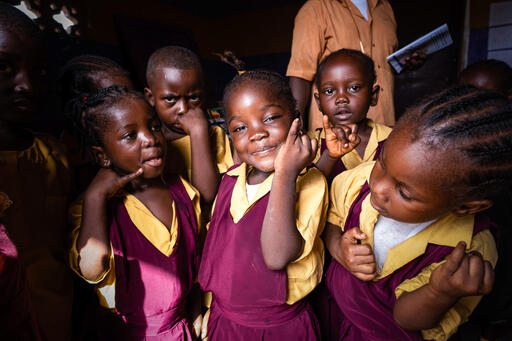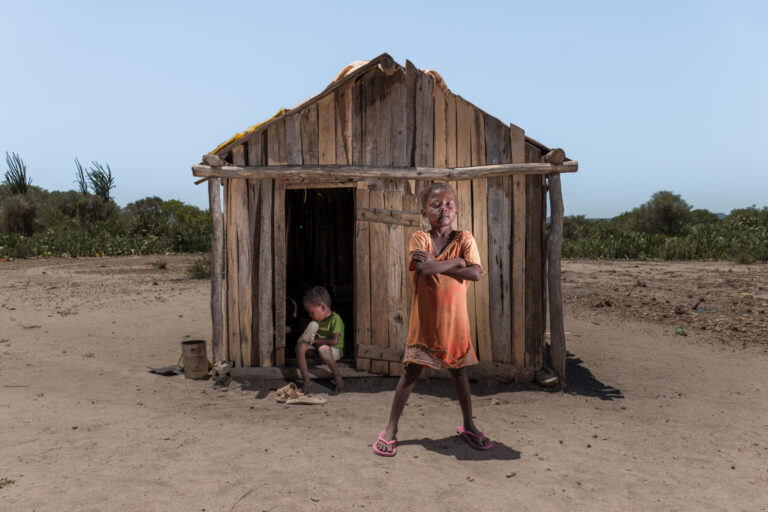In 2018, 116 million children like Tymur were immunized against diphtheria, tetanus and pertussis (DTP), yet millions of children are still not reached by the potentially life-saving vaccine. UNICEF invests significant resources in supporting immunization programmes and monitoring vaccination coverage levels and trends. Tracking vaccination coverage levels helps identify those children who are missed and where services need to be targeted. DTP coverage is one of the main indicators used to monitor the performance of immunization programmes.
Why does completing all doses of DTP matter?
To be fully protected against diphtheria, tetanus and pertussis, it is recommended that all children receive at least three doses of DTP during their first year of life. The DTP containing vaccine is one of the few vaccines universally present in all national vaccination schedules for children under one year of age. The proportion of surviving infants that received the first dose of DTP but not the remaining doses – defined as the dropout between DTP1 and DTP3 – indicates the ability of the immunization programme of ensuring children are fully vaccinated against Vaccine Preventable Diseases (VPDs).
Regional and national distribution of undervaccinated children
The estimated global DTP dropout among surviving infants was 4 per cent in 2018. Globally, as of 2018, still more than 5 million surviving infants are starting their vaccination schedule but not completing all the series, putting them at higher risk of preventable diseases. Sub-Saharan Africa and Latin America and the Caribbean were the UNICEF reporting regions with the highest DTP dropout at 8 per cent. Among the 5.9 million children who did not complete the full series of DTP vaccines, more than 70 per cent lived in the Sub-Saharan Africa and South Asia regions. In Sub-Saharan Africa, the dropout resulted in over 2.8 million surviving infants being undervaccinated [1]. Reducing the Sub-Saharan dropout to the current global level of 4 per cent will result in an additional 1.06 million surviving infants being fully vaccinated for DTP. Furthermore, in South Asia, the number of children that missed out on the second or third dose of DTP in 2018 was 1.3 million. All other regions had well below one million surviving infants not completing the full DTP vaccine series.
Dropout rates vary significantly between countries. The countries with the largest DTP dropout in 2018 were low- and middle-income countries with challenges beyond immunization and health. Many of these countries are in fragile state due to recent or ongoing conflicts and other internal challenges faced by the immunization programme. In addition, there are countries with large cohorts of surviving infants such as Nigeria, Ethiopia, and Venezuela with large vaccination dropouts. Addressing the dropout issue in these large countries will accelerate the closing of the undervaccinated children.
 Source: WHO-UNICEF Estimates of National Immunization Coverage (WUENIC), revision 2018.
Source: WHO-UNICEF Estimates of National Immunization Coverage (WUENIC), revision 2018.
Which countries have the largest number of undervaccinated children?
The figure below shows the relative importance of the countries in terms of undervaccinated; the larger the area, the greater number of surviving infants did not complete the DTP vaccination series in the region. Nigeria and Ethiopia, together with 1.35 million undervaccinated for DTP, accounted for 47 per cent of total Sub-Sahara undervaccinated surviving infants. Similarly, India and Indonesia accounted for 54 per cent and 62 per cent of the undervaccinated in their respective regions.
Distribution of the undervaccinated population for DTP vaccine by UNICEF reporting region.
Source: WHO-UNICEF Estimates of National Immunization Coverage (WUENIC), revision 2018; The World Population Prospects – 2019 revision, UN Population Division, New York, USA.
Millions of children are missing out on the full protection provided by vaccines, because immunization systems in many countries are not able to consistently deliver all recommended vaccines even after the first contact of the child with immunization services. To improve the overall dropout, reduce undervaccinated children and protect more children and communities from unnecessary illness, strategies to reach these children in these regions should be prioritized. UNICEF’s immunization programme helps to identify those children and works with partners in government, NGOs, other UN agencies and private sectors to implement proven strategies to improve vaccination coverage. Activities include engaging communities to create vaccine demand, procuring and distributing vaccines and keeping vaccines safe through cold chain logistics, as well as investing toward diagnostic and health technologies.
More pertinent UNICEF data and analysis on immunization coverage can be found here.
[1] Undervaccinated is defined in this document as children who started the vaccination series but did not complete them.



